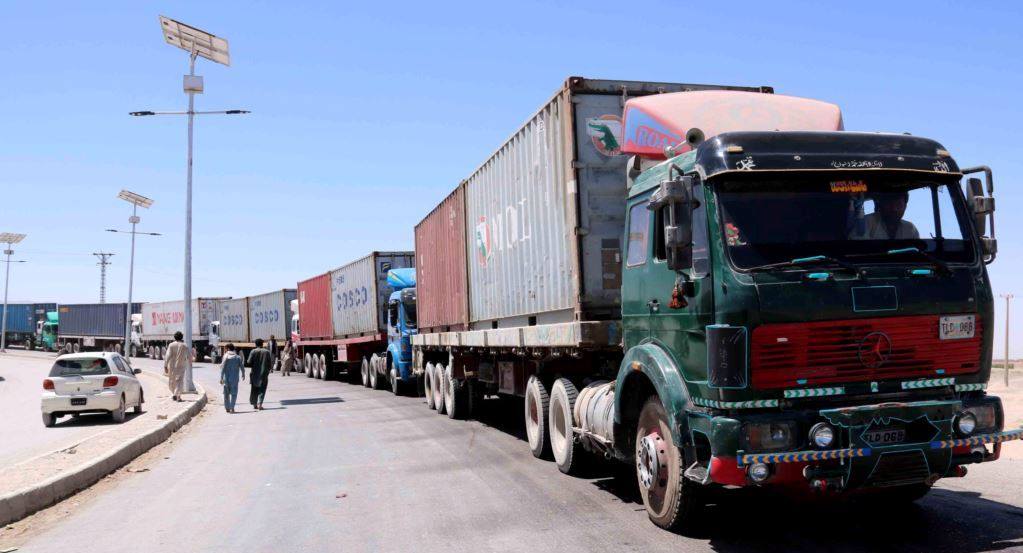Being landlocked remains one of the most disadvantageous positions for a state, especially in the modern global economy dominated by maritime trade. Prominent Oxford University economist Paul Collier listed being landlocked with bad neighbors as one of the four key reasons why countries with a combined population of 1 billion are stranded in poverty.
Afghanistan is a typical victim of such a landlocked geographic position. Transit routes and access to the sea are hardly dictated by international laws, conventions, and bilateral agreements when it comes to neighboring Pakistan. The situation remains grim, even during the outbreak of COVID-19, at a time when global efforts are being made to ensure humanitarian support to all countries.
In Pakistan, the first case of COVID-19 was confirmed by the Ministry of Health on February 26 and the pandemic gained momentum with every passing day since. On March 16, the country closed all its borders with neighboring countries for two weeks. The decision included the closure of the major crossings at Torkham and Wesh-Chaman along the Durand Line, thus interrupting Afghanistan’s trade and transit. It is worth mentioning that the Wesh-Chaman crossing point had been closed in first week of March. As a result, around 2,000 containers were stranded along the crossing points, while another 6,000 Afghanistan-bound containers carrying food, medicines, and non-food items were piled up at Pakistan’s Karachi port.
On March 20, Pakistani Prime Minister Imran Khan tweeted his commitment to support Afghanistan during the crisis and said that he had instructed the authorities to open the Wesh-Chaman crossing point. Although, Torkham, not Wesh-Chaman, is the major crossing point, Khan’s tweets inspired relief among Afghan traders, government, and the public. However, the situation remained unchanged until April 9. The crossing points were open again on April 10, but traffic was diminished — three days a week, plus hours reduced to 10 hours per day rather than 24-hour service. Further, 100 percent of goods were being scanned before crossing, as opposed to the 5 percent threshold laid out in agreements between the two countries. This meant 200 to 250 trucks could cross over per week, compared to earlier figures of 4,000 to 5,000. At this pace, it will take an estimated three months to bring all the stranded containers to Afghanistan.
The delay has severe cost implications as well. As per procedure, when a container reaches port, the trader has to receive the container and clear it within a week. After this, the trader has to pay demurrage charges, whose rate increases with the passage of time. In addition, when a shipping line delivers the goods, it provides the trader a two week timeframe within which the trader has to offload the container at the destination and return it to the shipping line. Past that period, the shipping line charges a detention fee on a daily basis. Because of slow and uncertain processing of goods at Karachi port, Afghan traders ask for a 28-day period to return the container once the goods are offloaded, for which they make additional payment to the shipping line. As such, for a 40-foot container that remains stuck at Karachi port for a month, the demurrage charges are around $500, with a roughly $100 detention penalty per day after the grace period.
The cost to Afghan traders could be in the millions of dollars if calculation are done for the around 8,000 stranded containers since first week of March. This additional cost would ultimately be reflected in prices, which are already rising due to supply shortages.
The Afghan authorities engaged with their Pakistani counterparts to find a solution to the ongoing problem to ensure the smooth passage of goods and waiver of demurrage charges. The Pakistani minister of maritime affairs announced that charges would be waived. However, the reality of that statement was not much different from the prime minister’s tweet. The customs authorities did not take action, giving the pretext that they did not receive an official notification.
In the first week of May, the Pakistani government revised its decision and announced the opening of the Torkham and Wesh-Chaman crossing points five days a week. However, only 100 containers per day would be allowed, 50 transit and 50 bilateral trade containers. Given the fact that Afghanistan’s exports are not allowed at the moment, the 50 bilateral trade containers include only exports from Pakistan. With an average of 50 transit containers per day, it would take around 120 days to bring 6,000 containers into Afghanistan.
This is not the first time Afghanistan has experienced such a dire obstruction of trade and transit. The history of troubled trade and transit relations with Pakistan is as old as the capricious bilateral political ties between the two states. Recent events are reminiscent of transit trade blockages in the 1950s when Afghanistan had to opt for expensive and longer routes through the Soviet Union to avoid the paralysis of its economy. Some hope for improvement emerged when the two countries started working on the Afghanistan Pakistan Transit Trade Agreement (APTTA). It was signed in October 2010, at a time when Afghanistan was completely dependent on Pakistan for trade routes, with limited bargaining power. The articles about security, scanning of goods, and charges are unfair and strictly favored Pakistan.
Afghanistan lacked alternative options to Pakistan, as the transport infrastructure in southern Iran was weak given international sanctions. When Iran’s relations improved with United States in August 2015 and sanctions were eased, Afghan trade with and via Iran gained momentum. A significantly large portion of Afghanistan’s trade and transit shifted to Iran. In the meantime, the trilateral Chabahar port, with the potential to further ease Afghan transit trade, gained attention. In the light of these developments, the Afghan government has been making bold statements claiming that Afghanistan is no longer a landlocked country dependent on Pakistan. However, the ground realities reveal the hollowness of these political claims.
A comparative analysis of revenues from different customs offices can be used to compare the amount of trade with and via Iran and Pakistan. Trade with Iran is mainly done via Herat and Nimroz while trade with Pakistan is mainly done via Torkham and Wesh-Chaman. The revenue data from the Afghan Ministry of Finance reveals that the Kandahar and Torkham crossing points contributed 27 percent of total annual customs revenue — equal to customs revenue from crossing points with Iran — in 2016. Trade with Iran took a leap in the following year. However, in terms of revenue contributions, trade with Iran is trending downward while trade with Pakistan is rising. In the first quarter of 2020, before the COVID-19 outbreak, revenue from customs on the Pakistan side was well above that with Iran.
Further, the commercial operations at Chabahar port began as India took over its operations in January 2019. However, Afghan traders are making limited use of Chabahar port. International shipping lines still do not come to Chabahar due to sanctions on Iran. Similarly, the Afghan banks are hesitant to process telegraphic transfers (TT) for goods that come via Iran. The Iranian and Chinese shipping lines could replace other international shipping lines. In the same way, as Chabahar is exempted from U.S. sanctions, processing of TTs should not be a problem.
The recent obstruction of transit trade and the approach of the Pakistani authorities has left the Afghan economy at the verge of a disaster, once again. A sustainable long-term solution lies in seeking alternative trade routes. The Afghan government has neither pushed for renegotiation of the bilateral agreement nor has it done enough to operationalize Chabahar for Afghan traders. The five-year duration of APTTA has already expired and there is a need to renegotiate it. A shift of transit trade to Chabahar would give the Afghan government much-needed bargaining power to renegotiate APTTA and ensure smooth trade and transit through both routes. The present Afghan government’s approach will only allow Pakistan to dictate the fortunes of the Afghan economy and exploit its vulnerable position.





